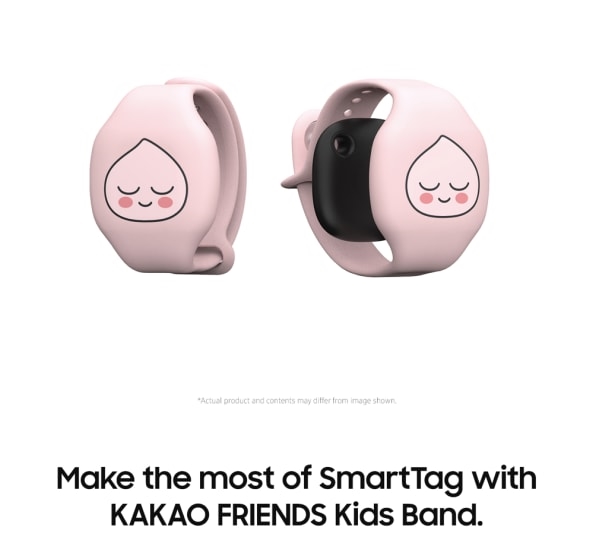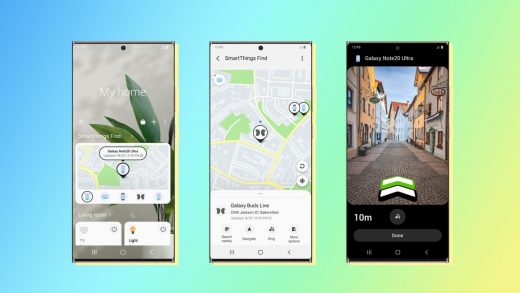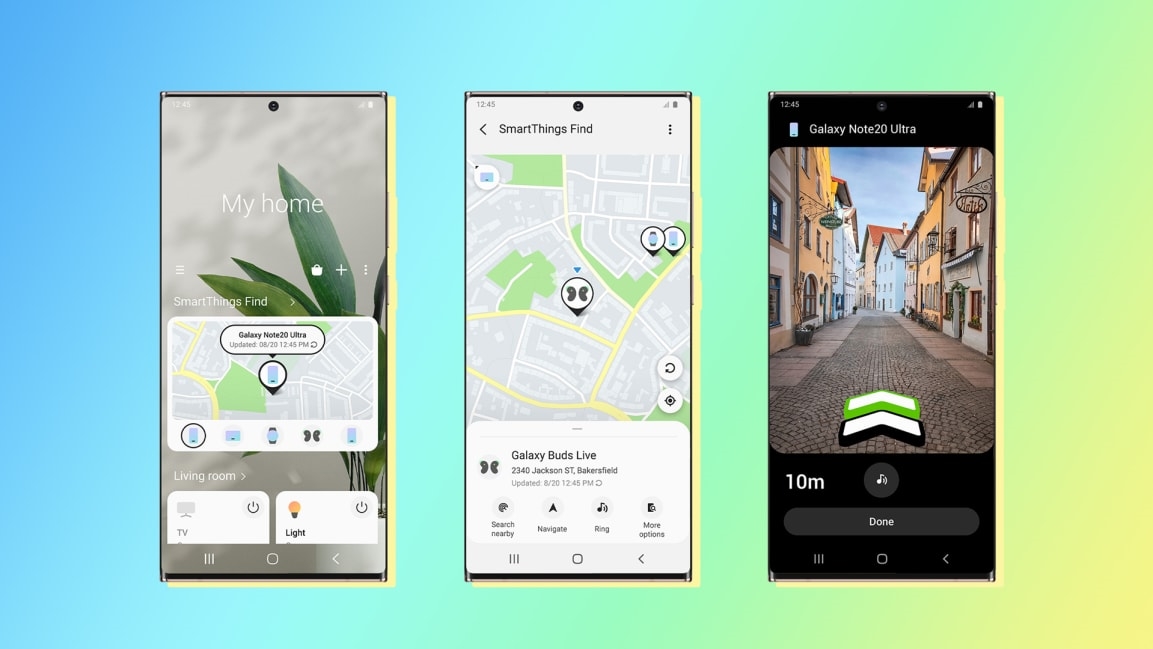Samsung’s new SmartTags will help you find lost stuff, but that’s not all
By Carolina Milanesi
While the Apple world waits patiently for an “AirTags” announcement, Samsung is already shipping its remote location device, the Galaxy SmartTag. It’s a little $30 rounded square device that attaches to your keyring or slips into a suitcase or backpack, enabling you to track the locations of those valuable objects using an app.

[Photo: courtesy of Samsung]
SmartTags are built on Samsung’s SmartThings home automation platform, and as Samsung VP and head of its SmartThings team Jaeyeon Jung recently explained to me, the location tracking devices are best understood within the context of the SmartThings ecosystem. That’s also a good way to understand how SmartTags differ from Apple’s reportedly forthcoming AirTags.
How SmartTags fit in
The Galaxy SmartTag and Galaxy SmartTag Plus are a natural evolution of the SmartThings Find feature, which Samsung introduced in October 2020. That feature uses Bluetooth Low Energy (BLE) and ultra-wideband (UWB) technologies to help people locate selected Galaxy smartphones, tablets, smartwatches, and earbuds.
Similar to Apple’s Find My network, SmartThings Find is powered by an opt-in network of Galaxy devices that helps locate devices that have been misplaced. Once a device has been offline for 30 minutes, it produces a BLE signal that can be received by other Samsung devices. When a device picks up the signal, it communicates the location to a Samsung server, which notifies the owner of the lost device. All SmartThings Find user data is encrypted and securely protected, ensuring that the device’s location is not revealed to anyone—including Samsung—except its owner.
The Galaxy SmartTag integrates BLE and is already available, while Galaxy SmartTag Plus uses UWB and will be available later in the year. The main difference between the two solutions is that with the integration of UWB, users can use augmented reality (AR) to locate their misplaced items without relying on sound. This can be convenient in a location where a device generating noise to get your attention could be disruptive. In public spaces, it might also be safer to avoid alerting others around you that an item was misplaced.

[Photo: courtesy of Samsung]
The SmartTag is not just about finding your lost items. “Like we aim to do with all Samsung’s smart devices, we want to design products that can help you in more ways than one,” Jung says. “Think about Samsung’s newest vacuum cleaner robot that can clean your house while keeping an eye on your pets with the camera built in. Each SmartTag can also activate a smart home feature at the press of the button.”
The popularity of 2018’s SmartThings Button, a stand-alone button that triggers automation actions, led to integrating this functionality into Galaxy SmartTag. Now you can attach your Galaxy SmartTag to your car keys so you can find them, and press the button to open your garage door when you drive home.
While for now Galaxy SmartTag is focused on consumers’ use cases, Jung says there is already quite a bit of interest from companies that see useful applications in a business environment. For instance, Samsung is exploring the use of SmartTags to find the carts used to move heavy equipment and products on its own campus. Considering Samsung’s strong presence in business-to-business applications, I see this opportunity as the biggest differentiator against Apple’s AirTags. Samsung’s Knox security and management platform and Samsung’s ability and willingness to design custom solutions for its B2B customers will make integrating SmartThings-supported products such as Galaxy SmartTags quite appealing.
I couldn’t help but wonder out loud to Jung whether Google might be interested in integrating SmartThings Find into the Android operating system itself. As Samsung and Google work more closely to integrate their respective products, this scenario does not seem at all unrealistic. Jung’s head nod tells me this is not the first time this thought has come up. The smile that follows tells me I will not get anything more from her on this topic, at least for now.
Within the Galaxy
Meanwhile, SmartTags in their current incarnation are the largest step in a journey that Samsung has been on since it bought SmartThings—then a high-profile startup—seven years ago. “SmartThings has come such a long way from being just a hub and bunch of sensors in your home,” Jung says. “Our mission with the platform remains the same today as when we acquired the company in 2014. We want our customers to fully enjoy a connected home experience that is rich, helpful, and secure.”
As of December 2020, SmartThings had 66 million active users, up from 52 million in January 2020. Jung says the pandemic has increased demand for connected TVs and appliances. Studies have shown that as people spend more time at home and undertake a more varied set of activities they tend to reassess their technology needs.
Jung believes that SmartThings’ success rests in the open nature of the ecosystem Samsung has been building. “SmartThings is an open platform that offers a great opportunity for our partners, not limited to the home. While we thrive in making the experience across Samsung’s products unique, we don’t limit the value of the SmartThings platform to that alone.”
As of late, Jung says, SmartThings has received a lot of interest from automotive brands precisely because of the open nature of the platform, not only for the APIs and tools but for the ability to use their branded voice assistant to control the car as well as connect to smart-home devices. Car companies are keen on branding their own voice assistant experience, Jung explains. This desire puts them more in competition with Amazon and Google, who want to promote Alexa and Google Assistant.
In October 2020, Samsung announced that German carmaker Daimler AG was joining the SmartThings ecosystem with its newest luxury car, the Mercedes-Benz S Class. The car voice assistant, which responds to the command “Hey Mercedes,” was already capable of changing the temperature in your car if you said you were cold or hot. It could even give you directions to the nearest Starbucks if you said you wanted a coffee.
“Now ‘Hey Mercedes’ is getting a lot smarter as SmartThings adds the ability to reach your home from your car and turn off lights, lock doors, adjust the home thermostat, set your security system, and close the garage door,” Jung says.
It was hard to have this conversation about voice assistants without asking about Bixby, Samsung’s own voice assistant. Jung says Bixby is one important voice assistant partner for SmartThings, and it is integral to Samsung’s devices. Still, other assistants play a role in the home, and consumers should have options, which is precisely what the SmartThings ecosystem offers them by supporting Google Assistant and Alexa.
(10)



